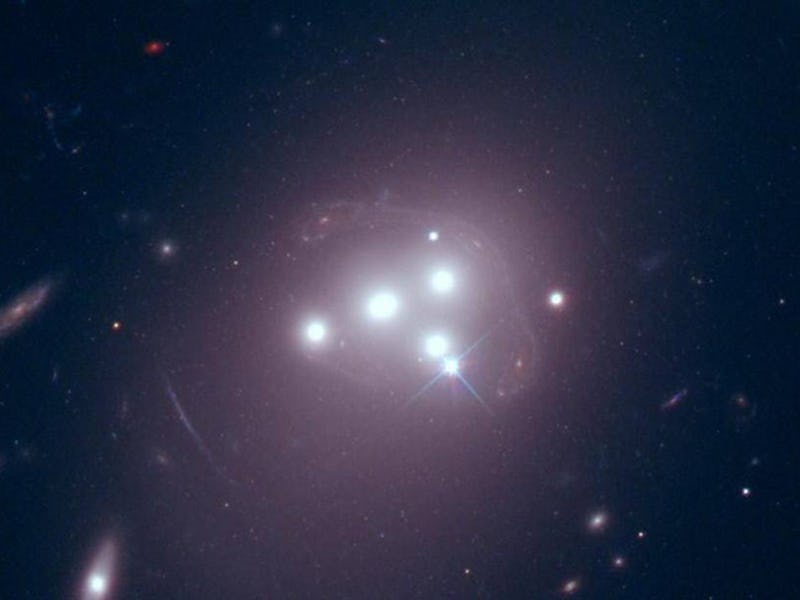Dark Matter Findings Reveal It Isn't Interacting With Itself After All

Dark matter is like the brooding teen of the universe. It gives astronomers hints of what it’s about only to completely contradict itself later. The result is an extremely mysterious and very metal intergalactic phenomenon that researchers have been trying to understand for almost a century with little to no luck.
This time in the seemingly endless saga to try and comprehend this peculiar particle, scientists have once again proven themselves wrong. Three years ago an international team of astronomers thought they had spotted stars in the Abell 3827 cluster separating from their dark matter, which would have meant dark matter was interacting with itself. This cluster is made up of four colliding galaxies 1.3 billion light-years away and after the team observed it again using the ALMA telescope array in Chile, it turns out the dark matter they thought went missing was actually just hiding in plain sight.
In a paper posted online, the group explained that they were previously duped by the universe’s moody teenager. The dark matter in Abell 3827 was actually sticking with its stars instead of interacting with itself. The group of researchers reported their findings at the European Week of Astronomy and Space Science in Liverpool Friday.
In the second look of Abell 3827, scientists discovered that the dark matter they believed was missing was actually hiding in plain sight.
“We just know embarrassingly little about it,” lead researcher Richard Massey tells Science News. “We keep trying to take a step forward, and find ourselves going back to the beginning.”
So far, all we know about dark matter is that it makes up a little over a quarter of the universe, but it’s completely invisible because it doesn’t emit light or energy. The only way scientists have been able to spot it is through its gravitational interaction with stars and galaxies. Think of it as the negative space pushing and pulling cosmic objects along.
Regardless of Massey’s earlier mistake, the physicist and his colleagues are still determined to crack the case of this mysterious matter. His team as designed a telescope mounted on a balloon, called SuperBIT, which they plan on using to search hundreds of other galaxy clusters for some mischievous dark matter.
Hopefully, with this project and the efforts of astrophysicists around the world, we will one day understand the puzzling adolescent of the cosmos.